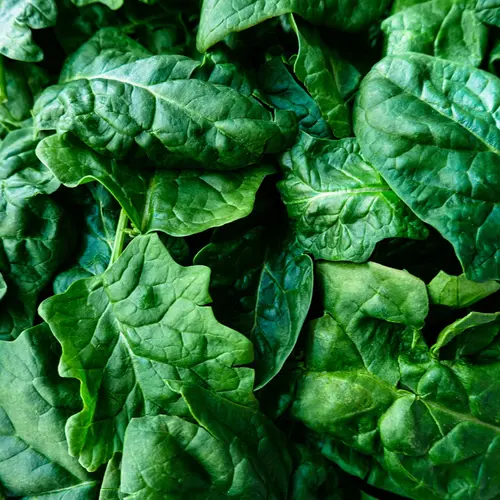If you scroll through social media apps, you're likely to spot pictures of serving platters covered with meats, cheese, fruits, and crackers. These artfully arranged displays are charcuterie boards, and they're a photo-worthy addition to any menu. They can be simple deli trays or carefully curated selections of gourmet foods with complementary flavors and textures.
These selections of delicious finger foods are not a new invention. People have long relied on preserved meats and cheeses as staples of their diets. Combining these items with bread and fruit turns a practical food source into a delicious meal.
The word charcuterie comes from the French and refers to cooking methods that preserve meats. Traditional charcuterie items include bacon, ham, sausage, terrines, galantines, ballotines, pâtés, and confit. These products were prepared so that the meat could last without spoiling, despite lack of refrigeration. Historically, charcuterie products were often made using pork, but any type of meat can be used.
What Was a Charcuterie Board Used For?
In the 19th century, the French and British aristocrats were known for serving a cheese course at the end of the meal, often paired with wine. This often consisted of a tray containing a variety of cheeses. Diners could select samples of each cheese to round out the meal. The idea spread to America, and many rich colonial families served cheese with wine after dinner.
The lower classes also enjoyed preserved meats, cheese, and bread, but in a less formal fashion. Laborers carried cured meats, bread, cheese, and pickled vegetables to work with them. The food didn't spoil and was easy to eat during work breaks. Local pubs would serve the same fare under the title of "ploughman's lunch." This combination of tasty items is still popular in pubs today.
What Is a Charcuterie Boards Made Of Today?
The contemporary use of the word charcuterie has broadened to describe a display of meats alongside cheeses and other treats like bread, crackers, or fruits and vegetables. They're popular at gatherings. People can customize a charcuterie board to match an event theme, highlight world cuisines, or add to the visual appeal of a buffet.
While trays of light fare have been popular at parties for years, charcuterie boards have gained iconic status with the rise of social media. Artfully arranged boards are ideal for photo opportunities, with food pros and home cooks alike sharing their creations online. Creative cooks make themed boards for holidays and special events, as well as classic collections of cheese and meats.
How to Make a Charcuterie Board
The preparation of a charcuterie board is largely about selecting items and arranging them in an attractive way. The food items don't require any cooking. It is possible to prepare your own smoked meats or homemade sausages, but most people prefer to buy pre-made meats and cheese for charcuterie boards.
Popular meats for charcuterie boards include:
- Salami
- Prosciutto
- Pepperoni
- Soprasetta
- Chorizo
- Capicola
- Jamón Ibérico
The meats are usually paired with cheeses. Some culinary experts suggest picking a combination of hard and soft cheeses to offer a variety of flavors and textures. Serving the cheeses at room temperature can enhance their flavors.
Popular cheeses for charcuterie board include:
- Cheddar
- Pepper jack
- Goat cheese
- Gouda
- Brie
- Camembert
- Bleu cheese
- Gorgonzola
- Manchego
You may want to add a selection of condiments to the board as well. Mustard, fruit jams, and compotes coordinate with the flavors of smoked meats and cheeses. Add crackers or bread so your guest can layer the condiments, meats, and cheese into bite-sized mini-sandwiches that are easy to eat. Pickles or olives are also tasty additions.
Fruits (either fresh or dried), along with nuts or vegetables, provide additional flavors and visual appeal to a charcuterie board. They aren't strictly necessary to the display, but sweet items like dark chocolate or honey can also round out the presentation.
Because charcuterie boards rely on meat and cheese as the central ingredients, they are neither vegan nor vegetarian. It would be possible to create a charcuterie board with imitation meats and cheeses, though, if that's your preference. Depending on the types of crackers or breads you select, you can also create gluten-free options.
Are Charcuterie Boards Healthy?
Charcuterie is delicious, but it's best enjoyed in moderation. Prepared meats frequently contain high amounts of salt. The salt helps preserve the meat and prevents spoiling. The meats often also contain a high fat content since fats enhance flavors through the preparation process. That can make them high in calories, as well as sodium.
Full-fat cheeses may also have significant calories and sodium. Many specialty kinds of cheese are prepared with full-fat milk, which adds to the rich flavors. Like preserved meats, cheese contains salt as part of the preparation process to help prevent spoilage.
Calories counts per serving for common charcuterie board ingredients are:
- Salami: 40 calories per slice.
- Prosciutto: 17 calories per slice.
- Pepperoni: 10 calories per slice.
- Goat cheese: 91 calories per one-inch cube.
- Gouda: 32 calories per cracker-size portion.
- Brie: 56 calories per once-inch slice.
- Bleu cheese: 31 calories per cracker-size portion.
- Water crackers: 11 calories per cracker.
- French bread: 27 calories per snack-size slice.
While each small item doesn't seem like a major calorie investment, putting several ingredients together can lead to a substantial portion of food.
DIY Charcuterie Boards
Making your own charcuterie board is a simple task. The "board" can be anything from a cutting board to a serving tray. Then, you can decide what to put on a charcuterie board. You can select several varieties of meat and cheese, along with nuts, jams, or fruits. Arrange the items in a visually pleasing pattern, maybe with the help of some social media inspiration to get ideas for a charcuterie board, and set it out for your guests.
